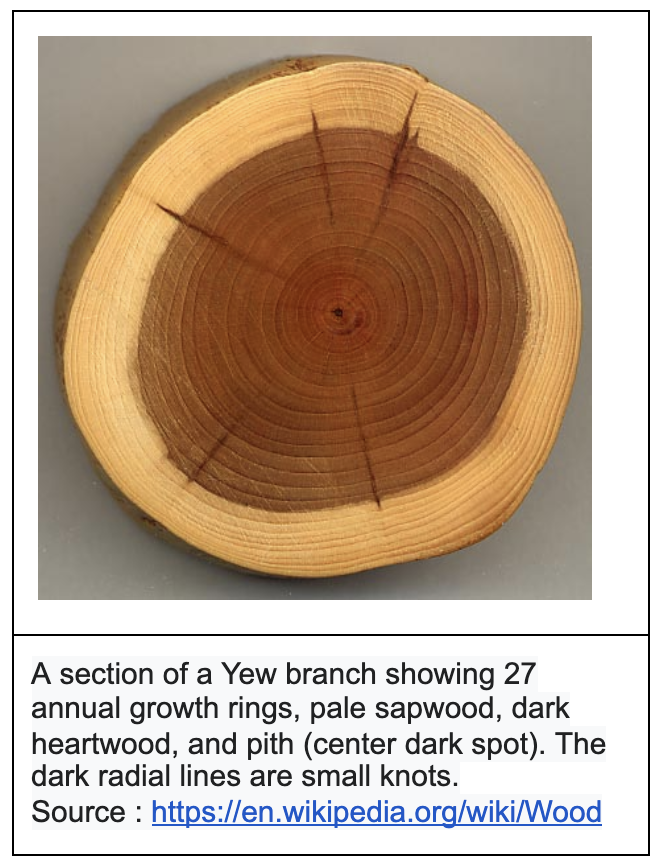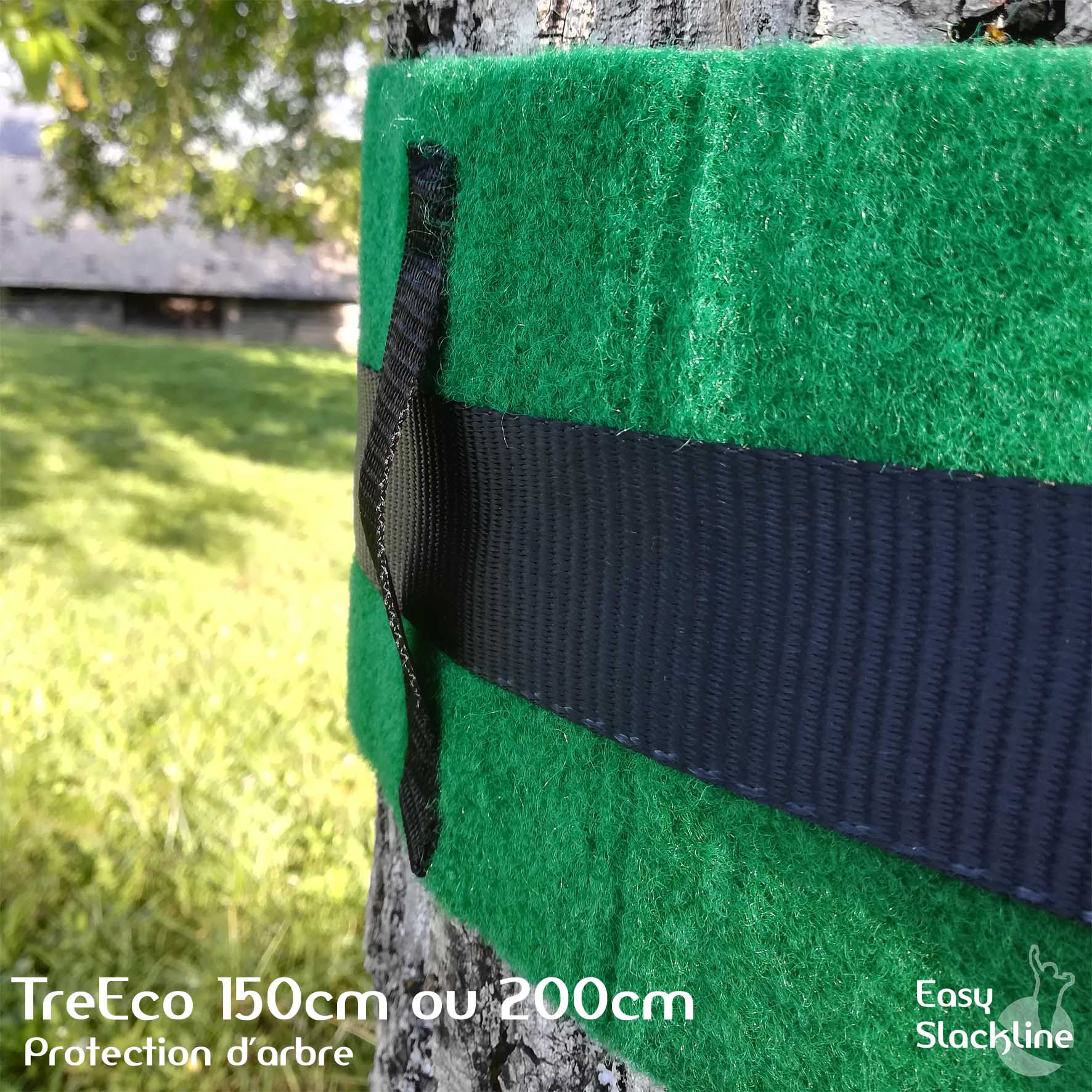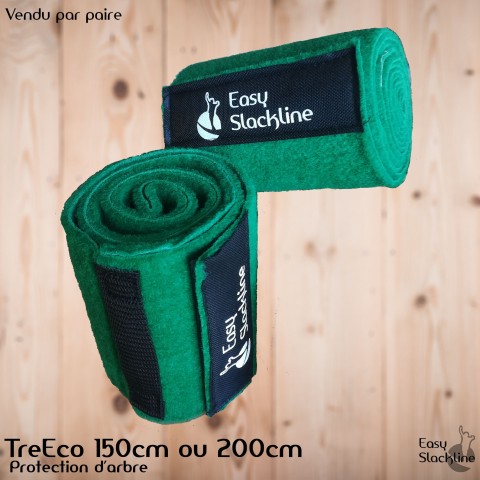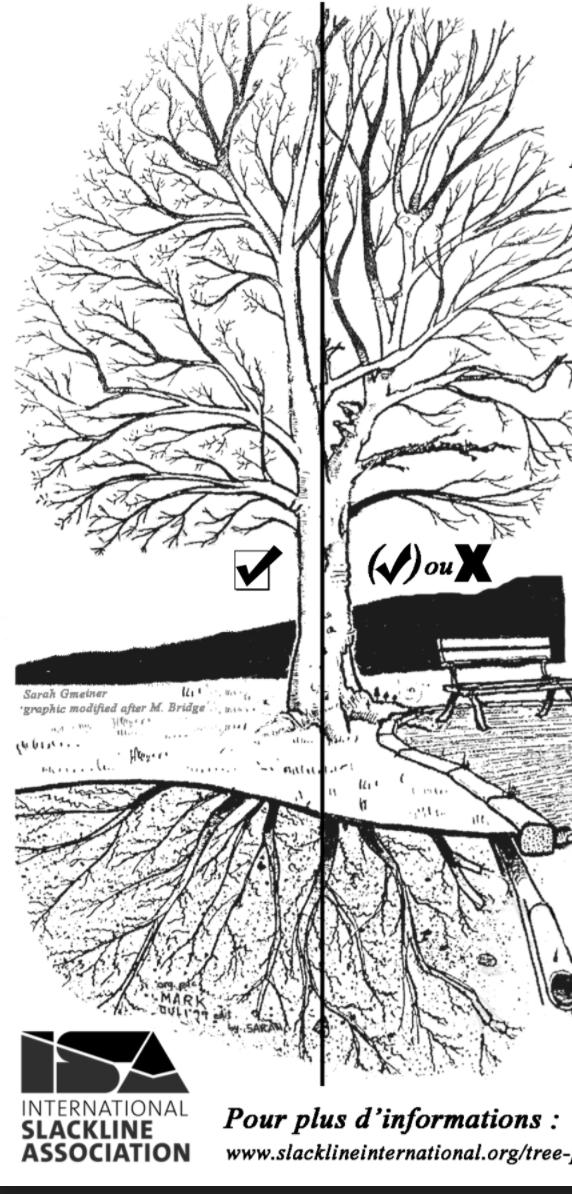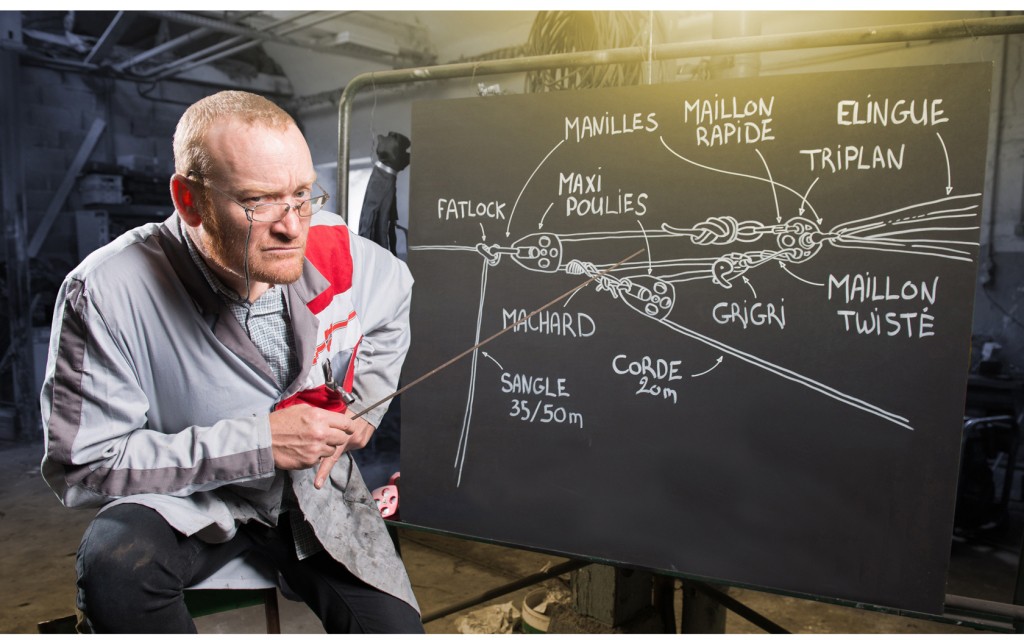From Monday to Friday 09:00am - 18:00pm
Why using tree guards in Slackline ?
Published :
04/06/2021 10:06:53
Categories :
General

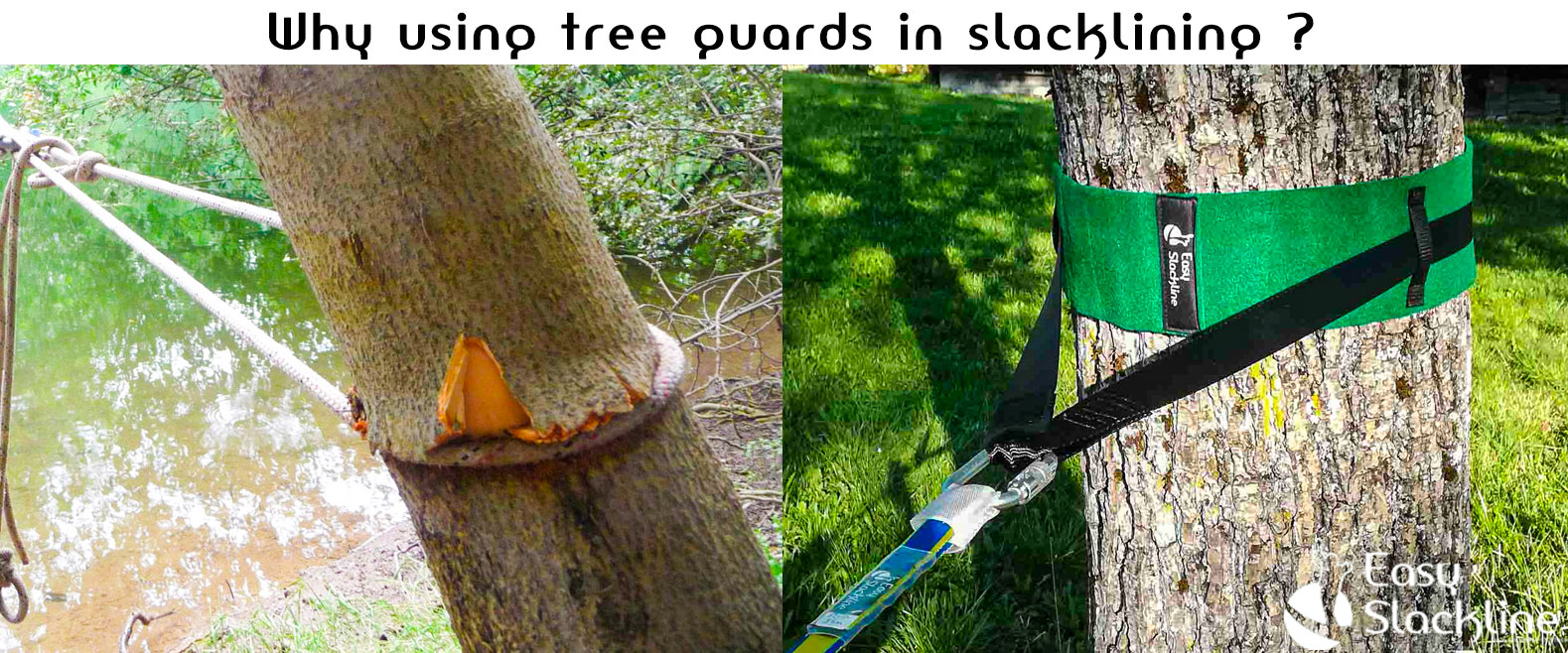
SUMMARY
- Improper use of the slackline damages the trees
- A tree is a living organism that must acred for
- The tension and friction exerted by the slackline puts the tree a severe test
- 3 tips to protect trees while slackliing
Have you ever seen the practice of Slackline prohibited in a public place? Some municipalities have put in place bans on slacklining because it can quickly damage the environment in which it is practiced if certain rules are not respected. It is then the responsibility of each Slackliner to ensure the protection of the trees.
Improper use of the Slackline damages the trees
A tree is a living organism that must be cared for
The upper part of the tree is supplied with water and nutrients through the outer layers of the trunk, more precisely the layers under the bark. Each spring, a new layer of bark is formed. However, this layer is initially quite fragile and needs time to strengthen (a few months). If you make a cross section, the layers are very easily recognizable.
If the canals in this underlayer (the wood) of the tree are damaged or destroyed, the sap supply to the tree top is interrupted. If the entire trunk contour is damaged, the tree will die. With partial damage, it is possible that the supply of the entire crown still occurs, but without certainty. In addition, there is the risk that fungi or insects attack and destroy the wood and cause the tree to die in the long term.
The tension and friction exerted by the Slackline puts the tree to a severe test

The Slackline has the characteristic of causing recurrent friction from top to bottom on its attachment points, usually trees. The longer the Slackline is, the more the phenomenon is amplified. Without precautions, this phenomenon leads to abrasion of the bark and, eventually, to the death of the tree.
In addition, the Slackline hung and stretched on a tree produces a leverage effect, where the tree trunk acts as a lever and the roots as a pivot. The higher the Slackline is hung, the greater the leverage will be. The risk of the tension exerted by the Slackline is to break the tree, or even to uproot it if the tree is not strong enough to support the tension.
But don't panic ! By respecting a few simple rules, it is possible to practice Slackline without danger for you or for nature.
3 tips to protect trees while slacklining
#1 - Using tree guards for Slackline
Slackline tree guards: what are they for ?
The purpose of the tree protector is to absorb the friction generated by the lanyard on the tree. Thus, the friction will be done on the protection and not directly on the tree, which will protect the bark..
How to install Slackline tree guards ?
Where to find Slackline tree guards?
A good Slackline tree guard should be a strong, durable material that adheres to the tree and has black guides that make installation much easier. Quilted polyester is a very effective and inexpensive material that does this job perfectly. You can order the TreEco from Easyslackline, which has already proven itself to Slackliners who have used it.
#2 - Choosing the right tree to install your Slackline
Let's start with the obvious: there are many species of trees. Trees are different from each other and have very different characteristics. Also, since slackliners are often not biologists, it is difficult for them to appreciate the vulnerability of trees. However, there are some good practices to follow to avoid making mistakes.
Choose a large enough tree

Only attach your straps to trees that are large enough. To recognize them: they are the ones you can wrap both arms around. The diameter should be at least 40 cm (around 125cm circumference)
The type of bark of the tree
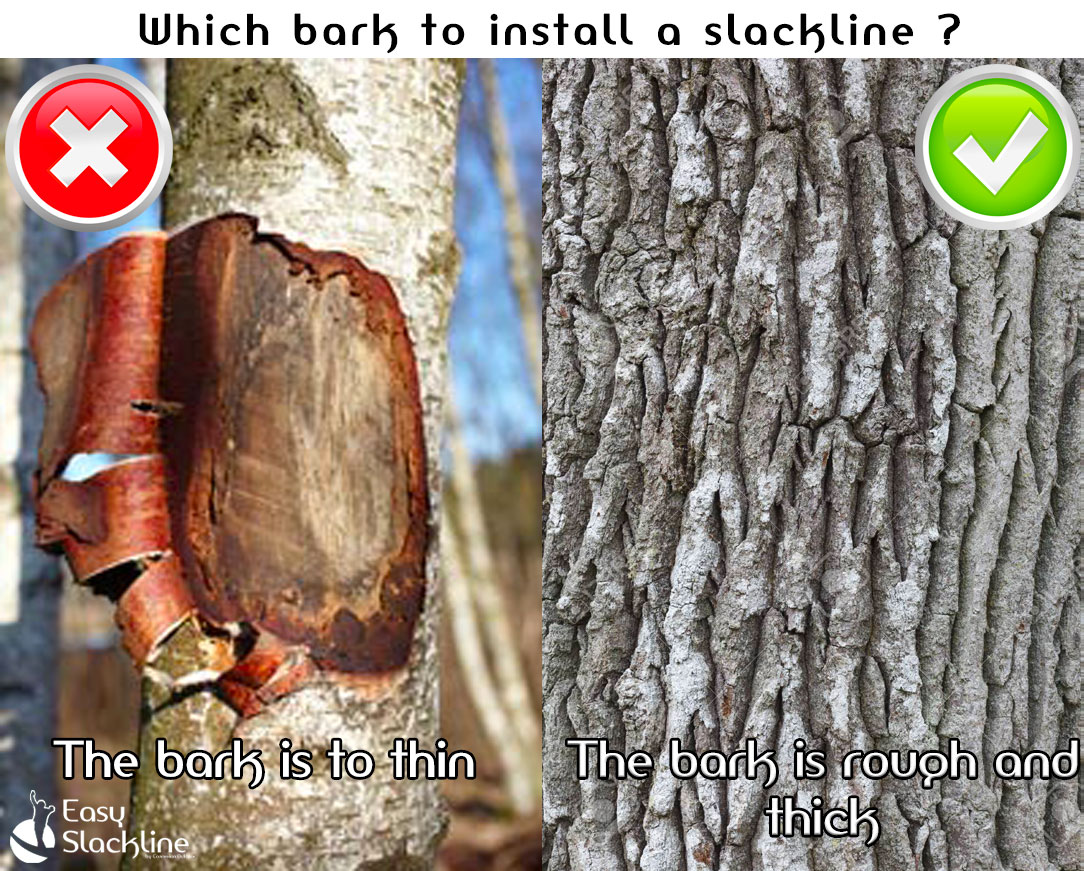
Choose only trees with thick, rough/scaly bark. Trees with thin bark are more fragile than others and the risk of abrasion is much greater. If you see that the bark is already damaged, the tree may already be diseased and therefore weakened. This is dangerous for you but also for the tree because you risk weakening it even more. Also, if you notice dead wood already on the tree: be careful!
Observe the environment around the tree
The stability of the trees lies in the size of its roots, their depth and also the quality of the soil. It is therefore important to be vigilant to the environment surrounding the tree because it may have damaged its strength.
If you notice infrastructure around the tree such as tarmac or a pole, it is possible that the roots have been weakened by construction. Also, an exposed root is a very shallow root. It may not be a very well rooted tree. You should also be careful about trees along the edges of water bodies. These soils are often loose and do not always provide good rooting.
In spring, be vigilant
More attention should be paid from January to May. Indeed, it is during this period that the bast forms. The bast is the film under the bark that allows the sap to circulate.
#3 - Choosing the right material to install your Slackline
Use wide lanyards
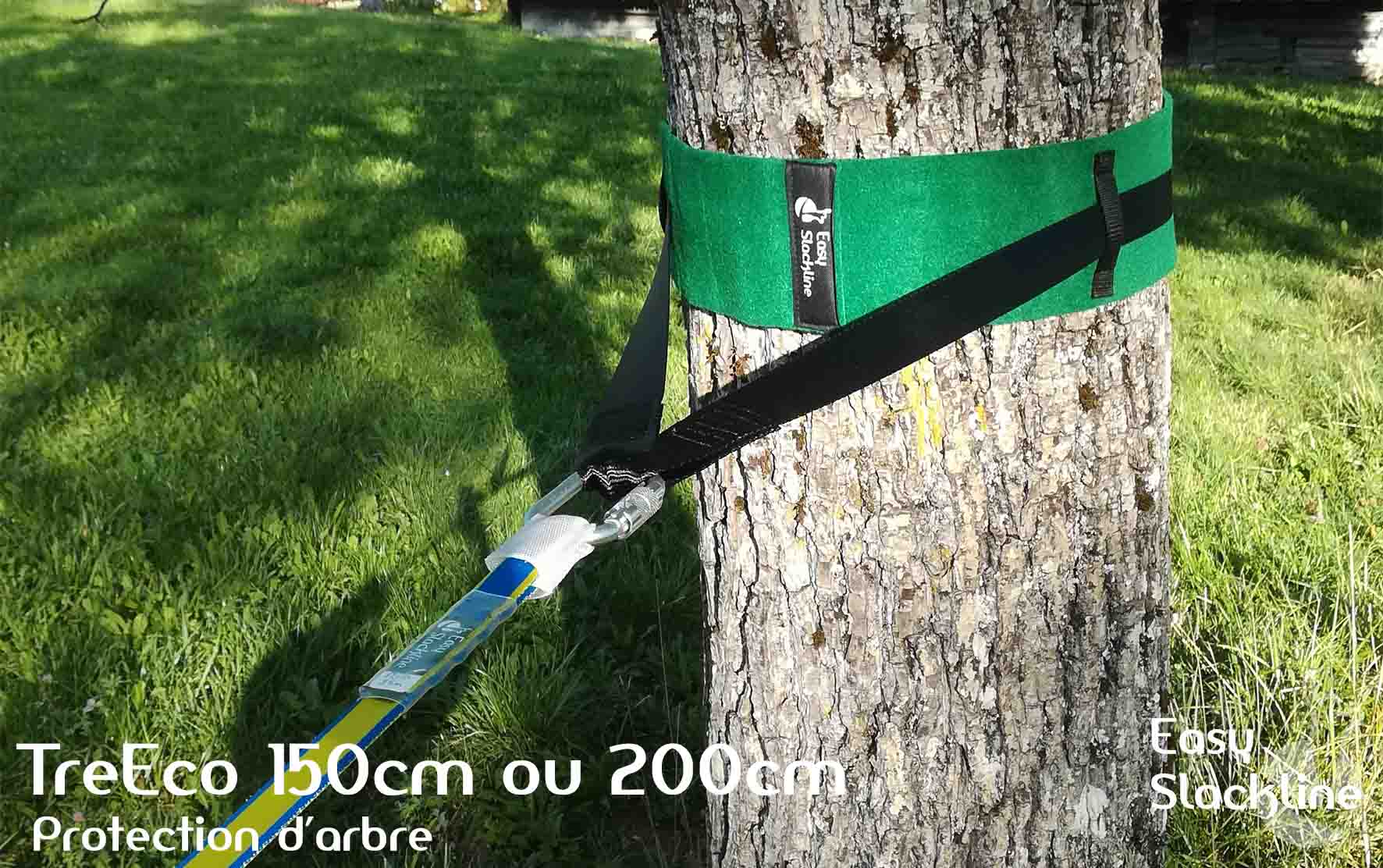
The width should not be less than 3cm. Use flat or tubular lanyards. Do not use ropes as they will sink in despite the tree's protections. Never tie knots or put hard elements in tension against the tree.
It is the duty of each of us to practice slackline in a responsible way by ensuring its safety, that of others and by protecting the environment. Slacklining can be damaging but by respecting these simple rules, we can make this practice sustainable and eco-citizen.


